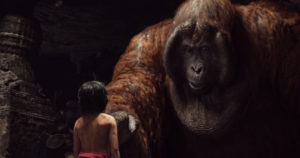
When director Jon Favreau agreed to take on Disney’s The Jungle Book, he knew that extensive computer animation would be utilized. The major question was how to integrate a live-action performer — ten-year-old Neel Sethi as Mowgli — with computer-animated animals, and talking ones, no less, per Rudyard Kipling’s original story. “In this case, I was very concerned about making the talking animals believable,” Favreau recently said on the Disney lot in the hallowed animation building. “That was the potential weak link on this, because I knew we could do the environments well, and I knew we could do the animals well and get animal behavior natural. I started looking at every talking animal movie or television show, and that became the basis for conversation with the artists, editors, and animators and visual effects supervisors.”
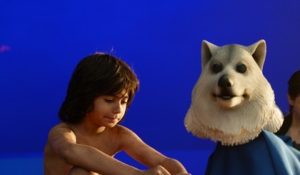
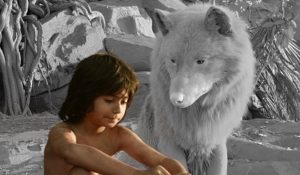
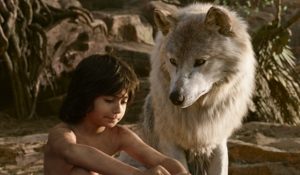 Favreau explained that he came aboard with a finished script, but it evolved throughout the animation process. “We have a story department, we’re starting to sketch out sequences and get a feel for it,” he noted. “And then you also have artists drawing environments, drawing key-frames, so you have inspiring snapshots of what it can look like at the end. You can see some of the images where you can see flashes of what the movie could look like. So as we arrive on a visual language, we start to get a sense of the tone of the story, and we’re crafting the story and working on [screenplay] drafts. This is a gradually wading into a big lake that you’re going to have to navigate through the next few years.”
Favreau explained that he came aboard with a finished script, but it evolved throughout the animation process. “We have a story department, we’re starting to sketch out sequences and get a feel for it,” he noted. “And then you also have artists drawing environments, drawing key-frames, so you have inspiring snapshots of what it can look like at the end. You can see some of the images where you can see flashes of what the movie could look like. So as we arrive on a visual language, we start to get a sense of the tone of the story, and we’re crafting the story and working on [screenplay] drafts. This is a gradually wading into a big lake that you’re going to have to navigate through the next few years.”
Prior to filming any scenes with Sethi, months of pre-production took place, including motion-capture sessions with Sethi which served as a rehearsal process. “We didn’t have the actors doing the voices there, so it wasn’t really a full production,” Favreau related, “but we were starting to set camera angles and make editorial decisions, starting to work through the ideas, and then cut it all together. Then, we had a temporary version of the film, a whole cut of the entire film that we could look at—like a low-res videogame—with some temp music and temp voices, but that was how we decided what we were actually going to film.”
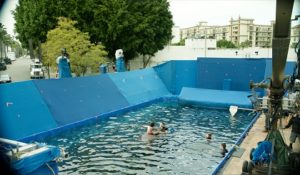
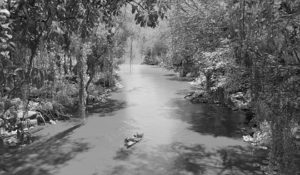
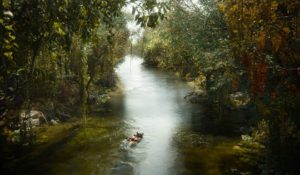 Once Favreau stepped into actual production, he still felt as though he had due freedom in blocking computer-animated animals and reshaping computer-generated backgrounds. “There’s always a sense that once we did photograph it, you had a lot of room to change things afterwards,” Favreau confessed. “For example, that song ‘I Wanna Be Like You’, when we filmed that, we had no idea that was going to be a musical number, and so Mowgli’s reactions were taken from him reacting to a very spirited monologue that we ended up replacing the song with, so you have a lot of flexibility if you know what tools you have.”
Once Favreau stepped into actual production, he still felt as though he had due freedom in blocking computer-animated animals and reshaping computer-generated backgrounds. “There’s always a sense that once we did photograph it, you had a lot of room to change things afterwards,” Favreau confessed. “For example, that song ‘I Wanna Be Like You’, when we filmed that, we had no idea that was going to be a musical number, and so Mowgli’s reactions were taken from him reacting to a very spirited monologue that we ended up replacing the song with, so you have a lot of flexibility if you know what tools you have.”
During principal photography, Favreau made use of two soundstages, but production would only build little pieces of set with which Sethi would interact—akin to a heavily padded gymnasium. “If he didn’t touch it, we didn’t build it,” Favreau detailed. “But if [characters] cast a shadow on him, we would have to build it, so we would have life-sized puppets that would cast a shadow on him, because it’s pretty hard to fake a shadow. So the stuff you can’t fake, we did real, like his face and physics — if he jumped, I would really have him, or a double of him, jump.”
In one of The Jungle Book’s early tests, Favreau and his team developed a realistic tiger, provoking a litmus test: take a live-action frame of Sethi, match the live-action lighting with the tiger’s digital lighting, and try to determine what was real and what was computer-generated, which required, in Favreau’s words, “a lot of finessing.” Close collaborations ensued with visual effects supervisor Robert Legato. “He was one of the most important people in the process because he had been there before,” Favreau stated. “Oftentimes, you’re not just executing it, but you’re figuring out a strategy, because each of those shots are a magic trick. It takes so much work to make any of these projects come to fruition, and if you’re not enjoying yourself, then you’re not doing your best work. And if you love what you do, it feels like you’re excited to get back to the puzzle that you’ve been working on; and that’s how I feel now.”
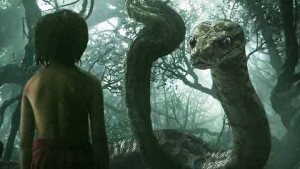
Legato, separately from Favreau, remarked that implementing a real Mowgli into a digital environment with digital characters was the project’s preferable course. “There is still something about the accident of real life,” he noted, a position echoed by digital innovator George Lucas. “That’s why, when we filmed Jungle Book, we used virtual cameras that we could pick up and hold and re-frame, and start to notice other things that you wouldn’t have planned if you did a storyboard and tried to do it on a computer. You just shed it and get the accident of ‘Oh, that light looks interesting’ or ‘that composition is interesting,’ and respond to it that way.”
Indeed, Legato supervised filming Jungle Book’s live-action elements using similar 3D equipment which he incorporated on Hugo and Avatar, and found a keen collaborator in Favreau. “He’s very warmhearted, very collaborative, he wants to hear your opinion,” Legato commented. “Because we had similar taste on how it was to be done, he trusted me to set up the mechanics of it all. It’s also really valuable that the director is also an actor because you’re trying to give realistic performances and nuances and pauses and things that only an actor can really give you.”
Legato spent six months prior to shooting Jungle Book’s live-action elements, after which physical production and computer-generated animation and environments took another two years, using The Moving Picture Company and Weta Digital as key visual effects vendors. In select shots in the film, the entire environment—foreground and background—plus all of the characters, even Mowgli himself, are digital. “As you’re reviewing sequences, other scenes needed to be touched up,” Legato recalled. “We had a virtual camera set up in our office, and I would go and shoot additional shots of additional coverage to make the scenes play as well as they could before they get turned over [to the effects vendors]. Then you start working on the color and the comps and there is a moment where you have to create the culture of what naturalistic photography looks like, cause in ‘CG land,’ its easy to cheat. That’s why I operated the [virtual] cameras. Jon was into all of it—he just didn’t want it perfect; he wanted to give it this patina of reality that you only get in a live-action film.”





